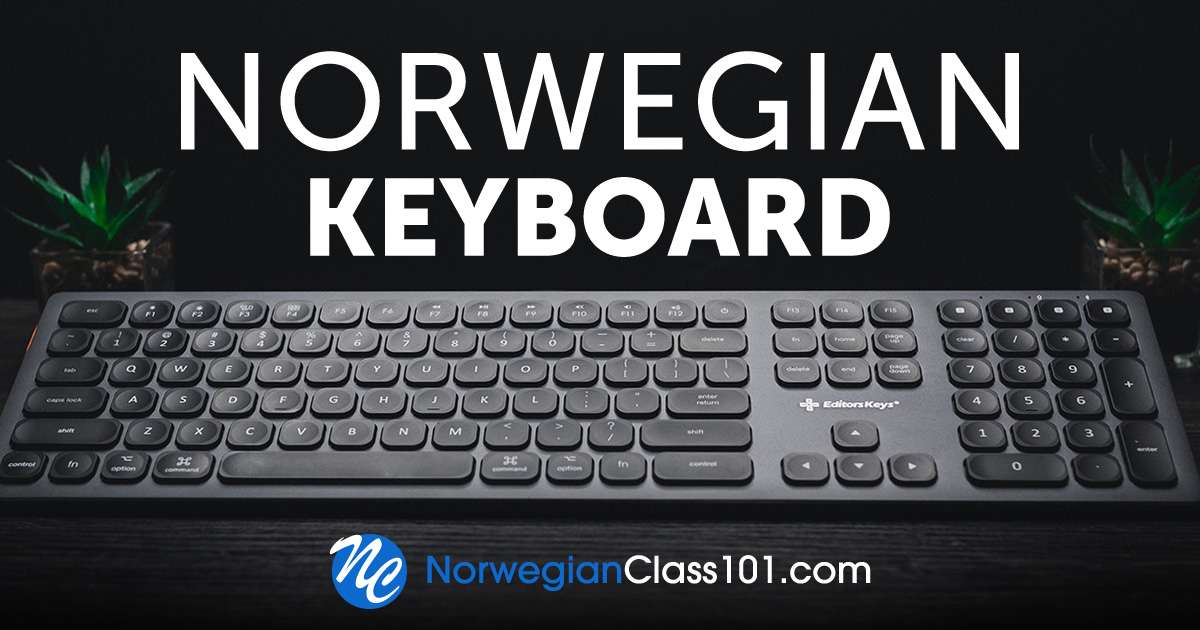Archive for the 'Norwegian Lessons' Category
October 24, 2019
How to Use Norwegian Numbers for Daily Usage
Especially if you're planning a prolonged visit to , using the correct Norwegian numbers for counting in Norwegian could be very important! Number systems are the other alphabet in any language. In fact, it is a language all of its own, and it serves a multitude of excellent purposes.
Table of Contents
A Brief History of Counting and Number Systems
Why is it Important to Learn Norwegian Numbers?
Learning Norwegian Numbers
Why Choose NorwegianClass101 to Learn all about Norwegian Numbers?
1. A Brief History of Counting and Number Systems
1. The Ishango Bone
The origin of counting, and with it numbers, is not clear to historians. While their art showed that prehistoric man had a concept of numbers, the first indication of... Show more
September 12, 2019
How to Say Sorry in Norwegian
Learn how to apologize in Norwegian - fast and accurately! NorwegianClass101 makes it easy for you to make amends. Start with a bonus, and download your FREE cheat sheet - How to Improve Your Norwegian Skills! (Logged-In Member Only)
Table of Contents
Common Ways to Say Sorry in Norwegian
How To Refuse Something Politely in Norwegian
Audio Lesson - Survival Phrases "How to Say Sorry"
Why You Will NOT Be Sorry For Learning Norwegian through NorwegianClass101
1. Common Ways to Say Sorry in Norwegian
Nobody’s perfect, not anywhere in the world. Everybody makes mistakes, and does and says regrettable things. Then it’s time to apologize, as saying ‘I’m sorry’ is not in vain. It can be very healing! Did you know that hearing a... Show more
June 20, 2019
Learn How to Confidently Introduce Yourself In Norwegian
Do you talk with strangers?
If you’ve been to Norway before, or are currently in Norway, you’ve probably noticed that the Norwegian people are pretty informal and casual overall. That is, when you actually get to know them.
Norwegians are known for seeming cold towards strangers. Even after you’ve mastered saying "my name is," in Norwegian and other introductory sayings, it’s normal to not know the name or age—or anything—about a person you’ve taken the bus with over multiple years!
If you do approach a stranger, there’s a big chance you’ll get a strange look instead of a friendly smile. However, this doesn’t mean that Norwegian people are actually cold. Yes, the weather might be cold. But as a people, Norwegians are warm and... Show more
February 7, 2019
How to Say I Love You in Norwegian – Romantic Word List
Do you often feel lonely and sad? Do you long for romance and are willing to do whatever it takes to meet that special person? Speaking another language could revolutionize your love life! So, why wait? Learning how to say ‘love’ in Norwegian could be just what you need to find it.
Or perhaps you were lucky, and have found your Norwegian partner already. Fantastic! Yet, a cross-cultural relationship comes with unique challenges. Learning how to speak your lover’s language will greatly improve your communication and enhance the relationship. At NorwegianClass101, our team will teach you all the words, quotes and phrases you need to woo your Norwegian lover with excellence! Our tutors provide personal assistance, with plenty of extra... Show more
January 12, 2019
How To Say ‘Hello’ in Norwegian, and Other Norwegian Greetings!
So, you’re heading for to travel or work. Awesome! You’re in for an amazing adventure! It’s a beautiful country, steeped in a rich culture that may be very unlike your own.
However, showing respect to the locals is a big deal in every country around the world. A respectful manner and attitude could open doors for you that would otherwise remain mystifyingly closed. Aside from just knowing ‘Thank you’ in Norwegian, greeting someone correctly in Norwegian could incline a local to treat you more favorably than otherwise! So, the clever thing to do would be to learn Norwegian greetings before you embark on your journey. Norwegian greetings are different from other languages and probably not what you’d expect. But if learning how to say... Show more
March 19, 2018
How to Celebrate April Fools’ Day in Norwegian
Most everyone is familiar with this day, as it is celebrated nearly everywhere the world. Yet, when exactly is April Fools’ Day? And where did April Fools come from? April Fools’ Day is observed on April 1st every year. This day of jokes and pranks is believed to have stemmed from the 16th-century calendar change in France, when New Year’s Day was moved from April 1 to January 1. This action was taken due to the adoption of the Gregorian calendar.
However, a few people were resistant to the calendar change, so they continued to observe New Year’s Day on April 1st, rather than the new date. They were referred to as the “April Fools”, and others started playing mocking tricks on them. This custom endured, and is practiced to this day... Show more
August 5, 2016
3 Reasons Why Successful Students Learn Norwegian In the Car
Not only is it possible to learn Norwegian in your car, there are 3 great benefits that will help you master the language faster and with less effort.
With everyone so pressed for time these days, it might seem like a daydream to believe that you could learn Norwegian in your car—but it’s not! Thanks to a wide range of new technologies and resources, learning a language in your car is easier than ever. Not only is it easy to learn a language while driving, there are actually a number of benefits, especially if the lessons are part of a structured learning program like NorwegianClass101. Here are three specific benefits to learning Norwegian or any other new language in your car.
Create Your Free Account and Learn Norwegian... Show more











